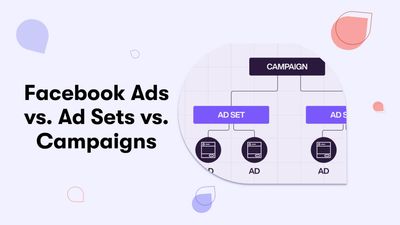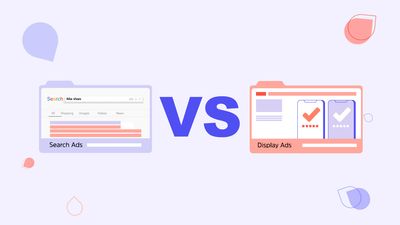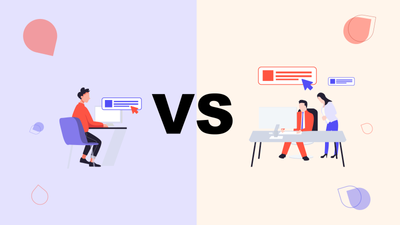What is Paid Advertising
Paid advertising promotes products or services through various platforms by paying for visibility. This approach allows businesses to reach their target audience more effectively than organic methods alone. By investing in ads, companies can drive traffic, increase brand awareness, and boost sales through strategic placements on search engines, social media, and other online channels.
The effectiveness of paid advertising lies in its ability to deliver tailored messages to specific demographics. Advertisers can utilize data-driven insights to optimize their campaigns, ensuring their content resonates with potential customers. With options ranging from pay-per-click (PPC) to display ads and sponsored content, businesses can choose formats that align with their goals and budget, making it a versatile tool for growth.
Types of Paid Advertising
Paid advertising encompasses a variety of formats and strategies, each designed to achieve specific marketing goals. Understanding the different types allows businesses to select the most effective methods for reaching their target audience. From search engine ads to social media promotions, each type offers unique advantages that can enhance visibility, engagement, and conversions. Here are some of the most common types of paid advertising.
Pay-Per-Click (PPC) advertising
Pay-per-click (PPC) advertising is a model where advertisers bid on keywords to display their ads in search engine results. Advertisers only pay when users click on their ad, making it a cost-effective way to drive targeted website traffic. This method is trendy on platforms like Google Ads, where businesses can achieve high visibility for relevant searches.
Display advertising
Display advertising involves placing banner ads on websites and apps to promote products or services. These ads can be in various formats, including images, text, or videos, and are typically targeted based on user interests and demographics. Display ads are effective for brand awareness and can reach potential customers while they consume content across the internet.
Social media advertising encompasses paid promotions on platforms like Facebook, Instagram, Twitter, and LinkedIn. These ads can appear in users' feeds or as sponsored posts and are designed to engage specific demographics. With detailed targeting options, businesses can tailor their messages to reach users based on their interests, behaviors, and location.
Video advertising
Video advertising utilizes short video clips to convey messages effectively. These ads can appear before, during, or after video content on platforms like YouTube and social media. Video ads are engaging and can capture attention quickly, making them a powerful tool for storytelling and brand promotion.
Remarketing allows advertisers to target users who have previously interacted with their website or ads. By displaying tailored ads to these potential customers as they browse other sites, businesses can encourage them to return and complete a purchase. This strategy is effective for nurturing leads and increasing conversion rates.
Native advertising
Native advertising integrates promotional content seamlessly into the platform where it appears. Unlike traditional ads that stand out visually, native ads match the look and feel of the surrounding content, making them less intrusive. This approach enhances user engagement by providing value while subtly promoting a product or service.
Influencer marketing
Influencer marketing involves partnering with individuals with a significant social media following to promote products or services. Advertisers pay influencers to create authentic content that showcases their brand. This method leverages the influencer's credibility and reach to effectively connect with a targeted audience.
These various types of paid advertising offer businesses multiple avenues to reach potential customers, each with unique advantages and implementation strategies.
Benefits of Paid Advertising
- Immediate visibility: One of the primary advantages of paid advertising is immediate visibility. Unlike organic methods that can take time to build momentum, paid ads can position a brand prominently in search results or social media feeds almost instantly. This rapid exposure is particularly beneficial for businesses looking to promote time-sensitive offers or new product launches, as it allows them to connect with potential customers right when interest peaks.
- Precise targeting: Another significant benefit is precise targeting. Paid advertising platforms offer advanced targeting options that enable advertisers to reach specific demographics, interests, and behaviors. This level of customization ensures that ads are shown to the most relevant audiences, increasing the likelihood of engagement and conversion. Businesses can optimize their advertising spend and improve overall campaign effectiveness by focusing on users most likely to respond.
- Measurable results: Lastly, paid advertising provides measurable results. Advertisers can access detailed analytics that track performance metrics such as clicks, conversions, and return on investment (ROI). This data-driven approach allows businesses to make informed decisions about their campaigns, adjusting strategies based on real-time feedback. As a result, companies can continuously refine their advertising efforts for better outcomes.
Creating a Paid Advertising Campaign
Define Your Objectives
The first step in creating a paid advertising campaign is clearly defining the objectives. This could include goals such as increasing website traffic, generating leads, or boosting sales. Understanding the desired outcome helps shape the overall strategy and informs decisions about targeting and ad formats. A well-defined objective sets the foundation for a focused and effective campaign.
Set Your Budget
Establishing a budget is essential for managing expenses throughout the campaign. Advertisers should determine how much they will spend daily or monthly and choose a bidding strategy that aligns with their goals. A clear budget ensures that funds are allocated effectively, allowing for adjustments based on performance metrics as the campaign progresses.
The right platform is crucial, as different channels cater to various audiences and objectives. Advertisers can choose from Google Ads, social media platforms, or display networks. Each platform offers unique ad types—search ads, display ads, or video ads—allowing businesses to tailor their approach based on their target audience and campaign goals.
» Consult our comprehensive guide to PPC platforms to find the right one for your business.
Create Compelling Ad Content
Developing engaging ad content is vital for capturing attention. This includes writing persuasive copy, designing eye-catching visuals, and ensuring all elements align with the campaign's objectives. Testing multiple variations of ads can provide insights into what resonates best with the audience, enhancing the likelihood of engagement and conversions.
Launch and Monitor the Campaign
Launching the campaign after finalizing all components is an exciting phase. However, ongoing monitoring is essential to continuously assess performance. By analyzing key metrics such as clicks, conversions, and engagement rates, advertisers can identify areas for improvement and make necessary adjustments to optimize results throughout the campaign's duration.









